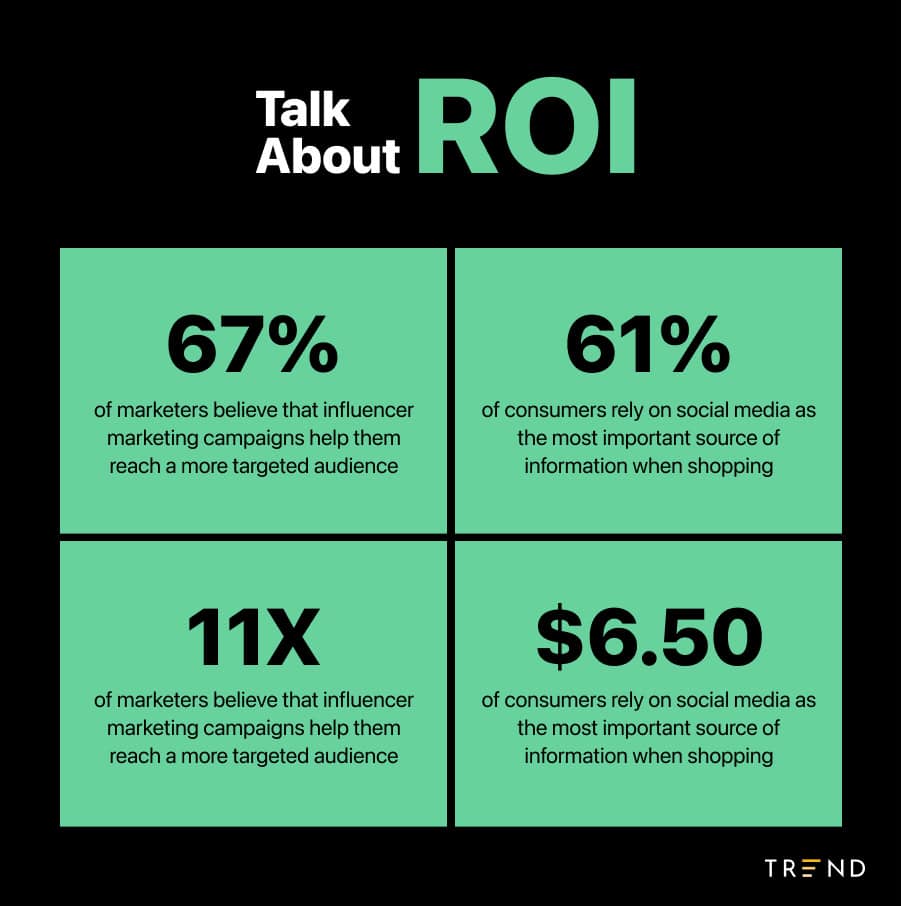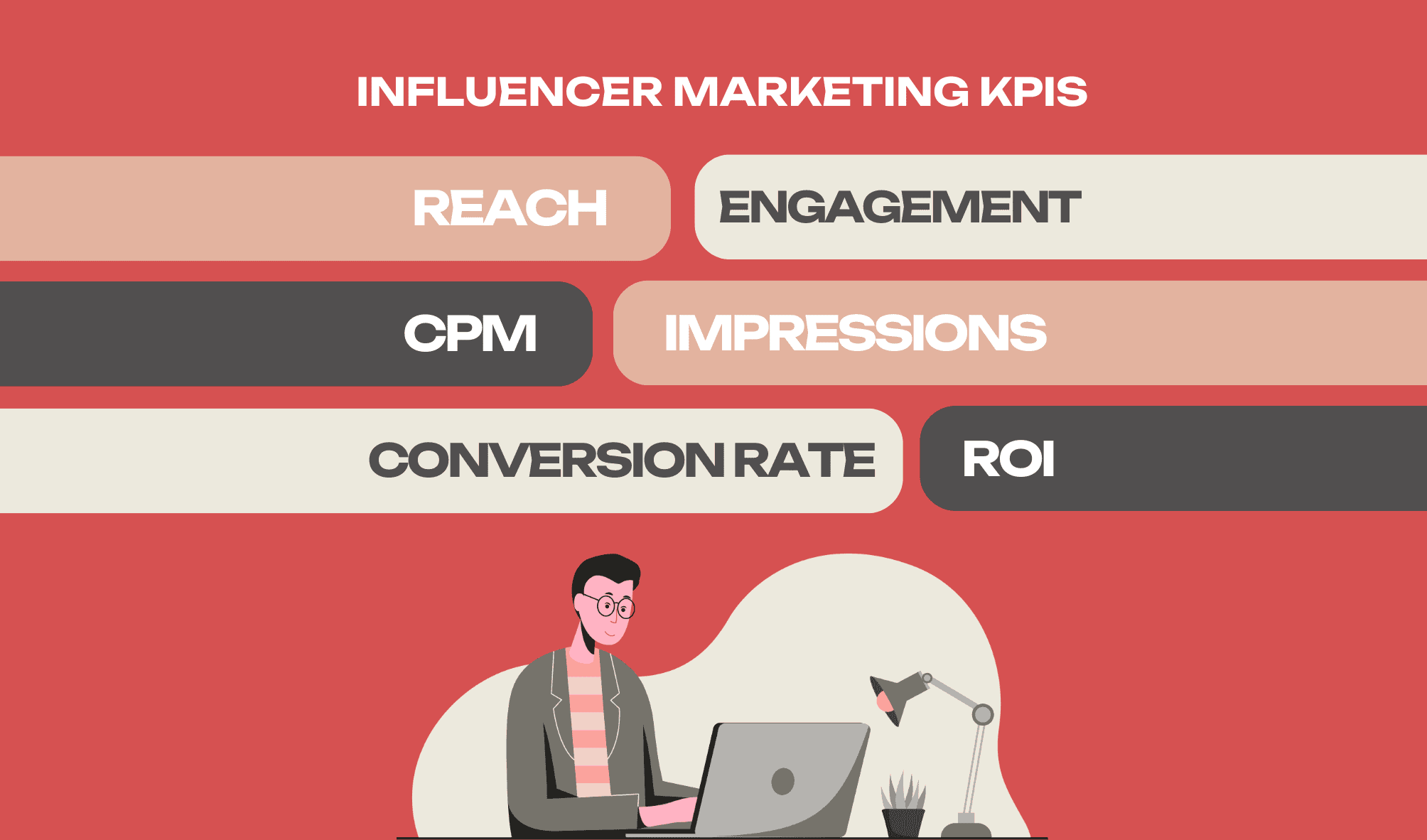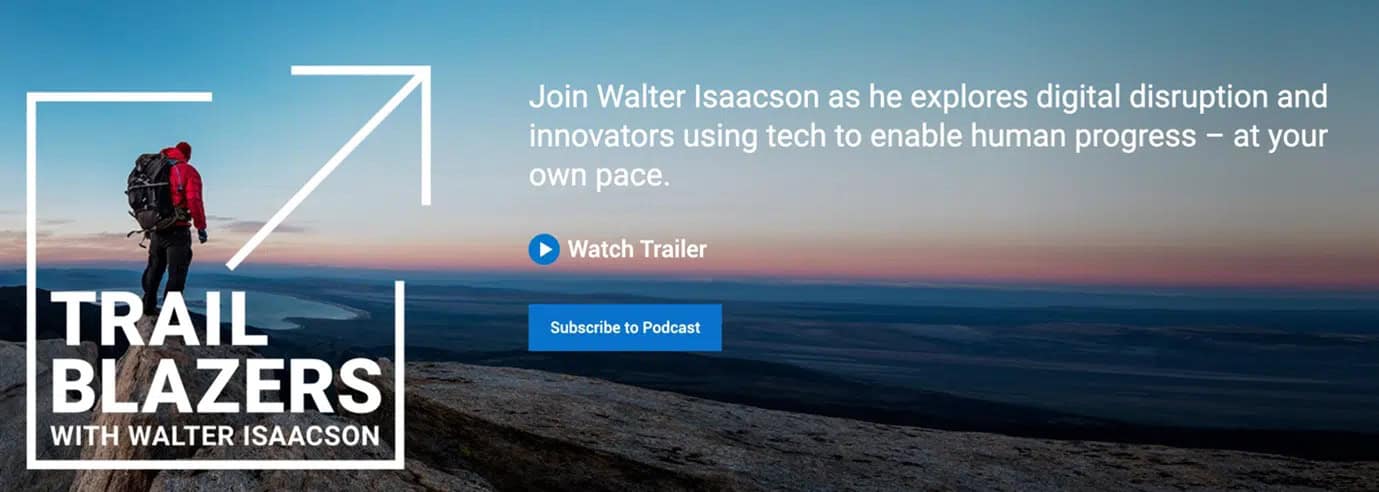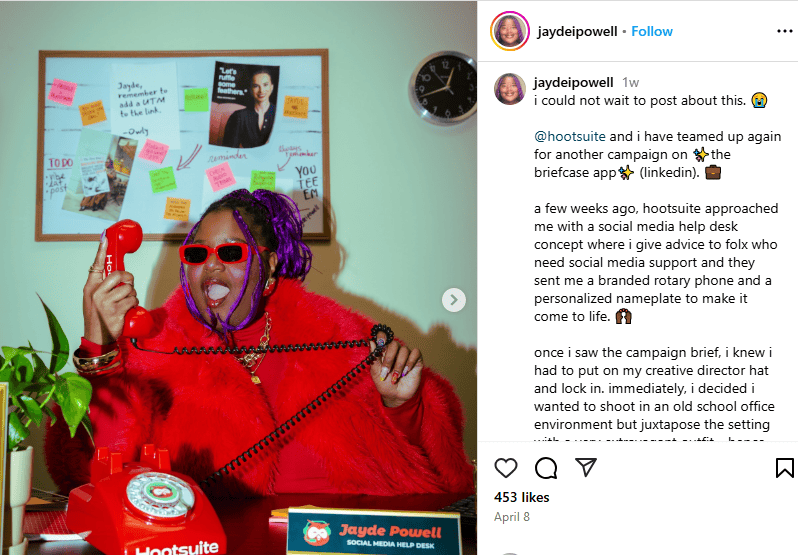What if the key to winning your next big client isn’t your sales pitch but someone else’s voice?
That’s quite possible. Today, the audience is influenced by industry experts, thought leaders, and prominent public personalities. Recent studies say 89% of marketers believe B2B influencer marketing yields better ROI as compared to traditional marketing channels.
This article covers the following:
- What is B2B influencer marketing?
- Why are companies investing in it?
- How to select the right B2B influencers
- How can you run a successful B2B influencer campaign?
- Real-life examples of B2B influencer marketing
Understanding B2B Influencer Marketing
B2B influencer marketing is a marketing strategy where businesses partner with social media personalities having relevant industry knowledge, credibility, and an influential online presence to promote their products and services.
This partnership happens in the form of brand endorsements, co-authored content, and virtual events. The key characteristics of B2B influencer marketing include:
- Objective: Have a clear goal—build authority, drive awareness, increase purchases, or generate high-quality leads.
- Content type: This includes a well-written post, video, newsletter, or podcast produced using platforms like FlexClip, with an educational, technical, and strategic approach.
- Influencer type: These are typically subject-matter experts, analysts, consultants, authors, or respected voices in a specific industry. We’ll talk more about them later in the article.
- Target audience: This refers to whom you want to deliver your brand message. It can be CEOs, CFOs, and other decision-makers.
The core pillars of B2B influencer marketing are credibility, collaboration, and distribution.
Why B2B Brands Are Investing in Influencer Marketing
Gone are the days when people took an interest in traditional advertising and sales reports.
Today, B2B buyers look for genuine reviews from industry experts and consultants. That’s why companies are shifting their investments toward influencer partnerships to spark conversations, drive engagement, and build credibility.

The key reasons for such a move are:
1. Expanded reach to a qualified audience
B2B influencers who position themselves as industry experts enjoy a qualified audience of decision-makers. By collaborating with niche influencers, businesses can reach CEOs, CTOs, and people who make vital purchasing decisions.
In 2025, B2B brands are focused on partnering with tech reviewers, consultants, and product specialists whose opinions carry significant weight among their followers.
Social media channels are huge, and influencers with a loyal follower base reach the masses. Not only are you leveraging their recognition, but also the platform’s potential to reach users from new regions.
2. Trust and authenticity
Today’s audience is skeptical of traditional marketing tactics and is inclined toward industry voices who speak the “voice of the audience”. This includes addressing:
- Pain points
- Aspirations
- Industry trends
- Personal experiences
- Shared principles and ethics
- Social proof
A mix of all the above elements develops a connection with the audience and enhances trust. Additionally, influencers deliver value through consistent content creation, keeping the brand relevant among the target ICPs (ideal customer profiles).
For example, SaaS influencers leverage their real identity to provide informational content to their audience. By prioritizing niche topics over generic ones, they develop a credible online persona that positions them as the go-to expert.
3. Improved SEO
SEO plays a key role in determining the digital presence of a brand on a search engine. Influencer marketing involves linking content to the brand’s website and social media profiles—an approach often enhanced by strategies used by the best SEO firms. Let’s take a deeper look:
Backlinks: Working with influencers generates links from their social media page to the brand website. These high-quality links enhance your domain authority and improve SERP ranking.
Social signals: Influencers link their content to your website, driving high volumes of organic traffic. SERP algorithms consider the traffic coming from an influencer’s account as a ranking factor.
Keywords: User-generated content (UGC) provides raw feedback from the users, which helps improve the customer experience and content strategy. You can meet the E-E-A-T criteria of Google and boost visibility.
4. High ROI and cost-effectiveness
For every $1 spent on influencer marketing, brands earn an ROI of $5.2 from sales.
Influencers already have a qualified audience, which helps in spending the marketing budget strategically. Unlike traditional marketing, brands can allocate small budgets to different content types and receive a 5:1 return.

Moreover, influencer-created materials, such as webinars, case studies, or expert articles, can be repurposed across various marketing channels, extending their value. This reduces the need for constant content creation and maximizes the return on each marketing dollar spent.
Selecting the Right B2B Influencers for Your Brand
Choosing the right type of influencer depends on your goals and target audience. Each type caters to distinct demographics, interests, and age groups. Before discussing how to find B2B influencers, let’s understand each type.
There are four types of B2B influencers:
- Nano influencer: They have a small following (e.g., under 10,000 followers) with a highly engaged community. Nano influencers are niche experts and often have a more responsive and loyal audience.
- Micro influencer: They have a bit more followers (let’s say between 10,000-100,000). The audience belongs to a specific industry and forms a community, making recommendations feel more personal.
- Macro influencer: They have an established audience of about 100,000-1 million followers. Macro-influencers are thought leaders, advisors, or critics, and their followers regard them as experts.
- Mega influencers: Often called celebrity influencers, they command a massive following (over 1 million followers) with an amazing reach. Their audience goes beyond a specific niche, and their words carry much weight.
The basis of B2B influencer marketing is to collaborate with the right influencer and create an impact on your target customers, so that their voice amplifies yours in a competitive market.
Here’s how you can select the right influencer for your marketing campaigns:
1. Define your requirements
What do you need in an influencer?
- Industry knowledge: Must have a genuine interest and knowledge about the sector.
- Originality: The following is built over time, wrapped with real trust and credibility.
- Engagement: Prioritize engagement rates and quality of interactions with your target audience.
- Brand alignment: The messaging style and professional presence must align with your brand identity and voice.
2. Understand your target audience
Who is your target audience, and what are their preferences, demographics, and pain points? This value proposition is something that helps you find influencers whose followers align with your ICP.
The audience tends to listen to people who position themselves as experts because their endorsements and advice resonate with them.
For example, if you are a tech company, look for influencers who are industry experts and have a niche audience. This will position your brand as a go-to solution and compel people to check out your services.
3. Don’t limit the content
You can’t predict the audience’s rapidly evolving content preferences. They might engage with:
- Webinars
- Videos
- Blogs
- Thought leadership articles
- Podcasts
Therefore, focus on diversifying the content formats. Look for influencers excelling on different channels and platforms. This will make your brand omnipresent and enable you to connect with the target audience across various touchpoints.
4. Analyze the campaign performance
Marketing doesn’t stop at launching a campaign. You must monitor the performance metrics to judge its effectiveness.

These metrics include:
- Impressions
- Leads generated
- Likes, comments, & shares
- Return on investment (ROI)
- Conversion rate
Tracking these metrics will give you clear insights into different influencers and their content formats. You can also stop a particular campaign if it doesn’t yield the expected results.
5. Always be relevant
Often ignored, but it’s no surprise that market trends and audience preferences change rapidly. Likewise, in the influencer world, reach can sometimes become seasonal.
For instance, the influencer who worked great in March can’t guarantee the same results in December. It is your responsibility to explore new influencers and potential partnerships across social media platforms.
Remember, influencers can become irrelevant for some time, but your products cannot. Align your B2B influencer strategy with evolving trends to build a solid presence.
Effective Strategies for B2B Influencer Campaigns
The influencer campaign strategy depends on your goals. What are you aiming at?
- Lead generation
- Product reviews
- Brand awareness
A clear aim gives direction to your campaign. Remember that launching an influencer campaign doesn’t mean creating content through someone with a huge follower count. It’s about creating meaningful, trust-driven partnerships that align with your business goals—and that resonate on a socioemotional level to build deeper audience connections.
The key strategies include:
1. Set SMART goals
Before reaching the target audience, decide what you want to achieve. The foundation of a successful campaign is its accurate alignment with the brand’s objectives. These objectives can be anything, from supporting a product launch to reaching new markets.
Setting SMART (specific, measurable, achievable, relevant, and time-bound) goals assists in tracking key KPIs and gives an idea about what results to expect.
2. Know your audience
Do thorough research across platforms like LinkedIn, Instagram, Twitter, and Facebook to create a comprehensive buyer persona. Consider the following characteristics:
- Age
- Engagement levels
- Browsing history
- Influencers they follow
- Interested pages
By creating a buyer persona, you can target content strategically and identify high-quality prospects likely to make a purchase.
Pro tip: Identify the platform where your audience is most active. Track their recent activities to understand their preferences and align their needs with the services you are selling.
3. Choose the right B2B influencer
Don’t select influencers based on their follower count. Focus on finding profiles that align with your goals and target audience. Analyze their:
- Engagement
- User interactions
- Feedbacks
- Certifications (if any)
- Positioning
This will provide a clear blueprint of their industry relevance, content quality, expertise, and authenticity.
Note: A person with organic growth is more likely to reach the audience than someone with irrelevant followers. Prioritize quality over quantity.
4. Diversify your content
According to Forbes, 50% of decision makers rely on word-of-mouth information to make buying decisions. This is highly impacted by the type of content you distribute across platforms.

You can leverage influencer partnerships to create:
- Guest blog posts
- Podcasts
- Co-hosted webinars
- Organize virtual industry events
- Product reels
- Insightful interviews
- Advertisements
You can also collaborate on interactive content using tools like Typeform, inviting the influencer’s audience to participate in surveys or quizzes that tie into your campaign.
There is no limit to what you can create with a third party. You can educate, entertain, and inform the audience with unique content and keep the spark alive.
Bonus Tip: Pair your influencer strategy with ReferralCandy to turn engagement into measurable growth. You can embed referral links in influencer content or emails, reward new customers for sharing, and track results, no dev work needed.
Successful B2B Influencer Marketing Examples
Top companies leverage B2B influencer campaigns to stay ahead of the curve. Here are some real examples of success:
Dell

Dell Technologies features a podcast named Trailblazers, co-created with the former CNN CEO, Walter Isaacson, a renowned personality in the tech world.
Dell leveraged Walter’s audience to boost its reach and visibility among the audience. In the podcast, he talks about the history of the tech business and provides deep insights. Dell is just a sponsor of the podcast.
Since the audience considers Walter a credible personality, Dell can reach its ICPs organically in a crowded market. This podcast was a big hit and influenced other B2B businesses to create co-authored content.
Clickup

In 2024, Clickup collaborated with Ross Pomerantz to create content related to workplace scenes.
Ross had already built a loyal follower base with his comedic style of content creation. The brand leveraged it to distribute content across platforms and build a social presence. This collaboration led to 150,000+ organic impressions.

Hootsuite, a social media management platform, collaborated with four famous B2B influencers:
- Jayde Powell
- Brandon Smithwrick
- Sophie Miller
- Jazmin Griffith
This brand developed a “social media helpdesk” to guide social media managers through posts and comments. The influencer’s job was to respond to the comments and help the audience.
The campaign flooded the comment sections, and Hootsuite gifted the creators personalized nameplates and branded rotary phones.
The Future of B2B Influence Starts Now!
B2B influencer marketing isn’t a fancy marketing tactic; it’s an important pillar for brand growth and visibility. Many small and big businesses collaborate with niche influencers to build a meaningful connection with their target audience.
With the rapid technological advancements, the industry now offers AI creators to automate content creation and performance analytics. Therefore, companies embracing innovation, authenticity, and precision continue to grow and stay ahead in 2025.
Want to streamline your social media workflow?
Visit bulk.ly today and simplify content creation, scheduling, and management with its AI-powered automation tool.

